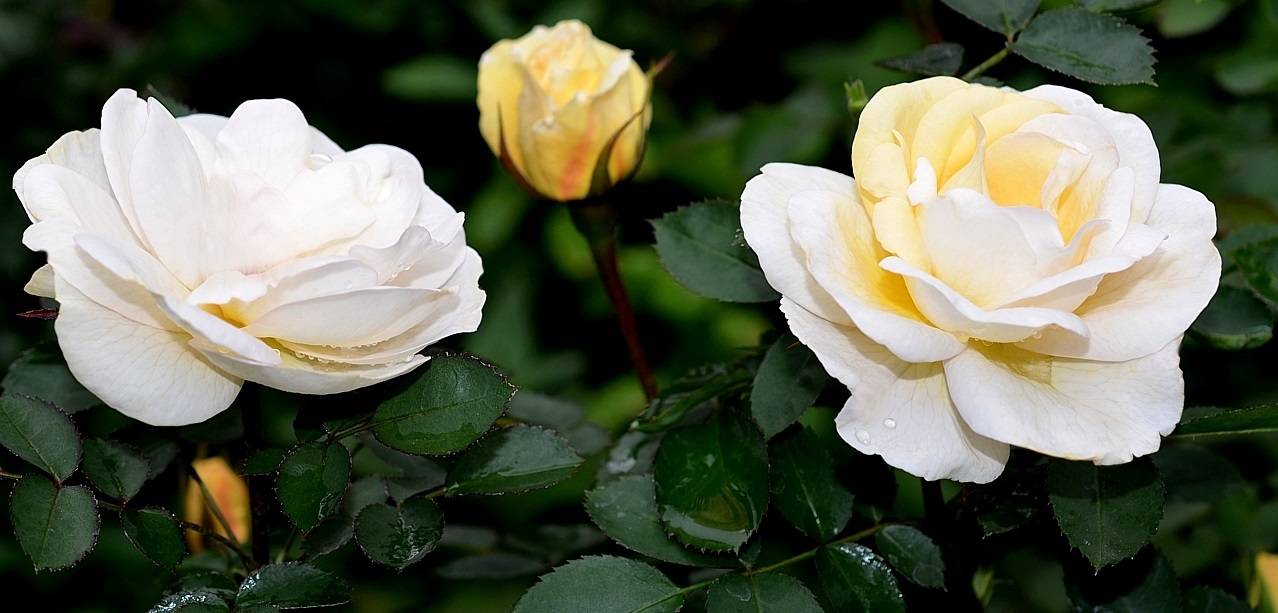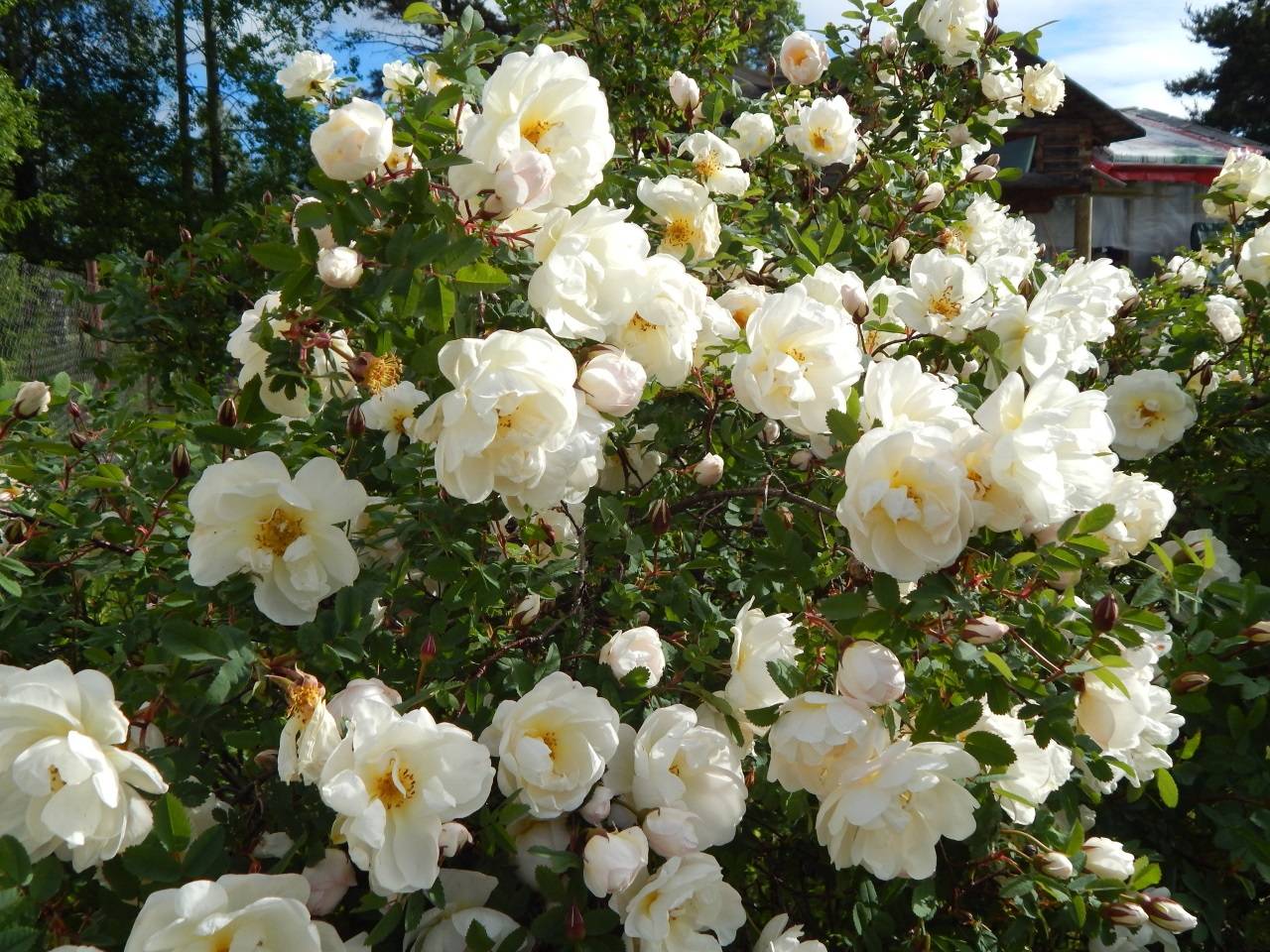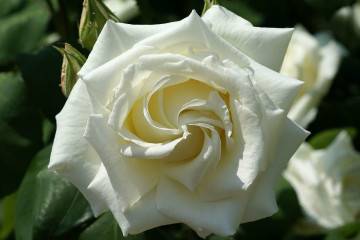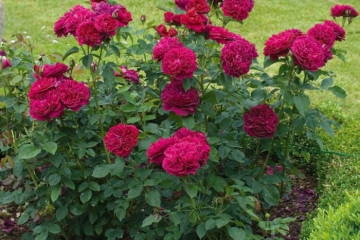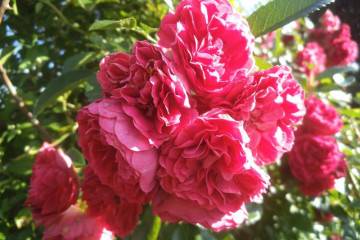Rose J. P. Connell - description of the yellow variety
Content:
Park rose J. P. Connell of Canadian selection is adapted to the conditions of the Russian climate and has excellent varietal characteristics. Refined fragrant flowers will become the pride of the florist and the decoration of the garden plot.
Rose J.P. Connell: description and characteristics
JP Connell, part of the Explorer series, was bred in 1987. An adult bush with strong, straight shoots grows up to 1.5 m in height and width. The flowers are large, cream-colored with a lemon-yellow core, combined into inflorescences of 5-7 pcs. The aroma is light, unobtrusive.
J. P. Connell is designed for zoning, hedging, flowering galleries and terraces. Landscape design specialists often use it in group garden compositions.
How to properly plant in open ground and grow a flower
When landing "Canadians" you should adhere to certain rules. You can get a healthy plant only by purchasing high-quality planting material in a proven garden site.
Roses of this variety are planted only in the form of seedlings. They can have an open or closed root system. In the latter case, the plants tolerate transportation and transplanting better.
Seat selection
The J. P. Connell site should be sunny but slightly shaded during the hot afternoon hours. It is good if it is located on a small hill. Do not unnecessarily block the bush from the wind.
How to prepare the soil and flower for planting
Roses need light loose soil, so the soil is dug up and drained in advance with river sand. It is also advisable to increase the nutritional value of the soil by introducing humus, ash and minerals.
Planting procedure step by step
The planting of park roses is carried out in a certain sequence. They act like this:
- Dig a landing hole 60 × 60 cm deep in 2 shovel bayonets.
- A drainage layer of broken brick is laid on the bottom, and earth is sprinkled on top of it.
- A rose seedling is placed in a hole, the roots are carefully straightened.
- The pit is filled up, compacting the soil.
- The plant is watered with settled water.
After completing the planting, the ground around the flower is mulched.
Plant care
Caring for a rose by J.P. Connell consists in performing standard procedures that have some peculiarities. They all boil down to regular watering, top dressing, pruning and preparation for winter.
Watering rules and humidity
It is recommended not to dry the soil under park varieties of roses, regularly watering the bushes 1-2 times a week. Towards the end of the season, the frequency of watering is reduced.
Top dressing and soil quality
For the full development of the J.P. Connell rose, in the spring, it is fertilized with nitrogen-containing compounds so that it can grow new shoots and gain green mass. In the summer, you should definitely feed the bush with potassium and phosphorus.
Pruning and replanting
Park roses usually do not require frequent pruning, with the exception of non-viable shoots, which must be disposed of in the fall and after wintering.
Features of wintering a flower
According to the description, J. P. Connell is a rose that does not require additional shelter due to its high winter hardiness. However, in regions with harsh winters, experienced flower growers wrap the bushes with non-woven cloth, having previously spud them to a height of 20 cm.
Blooming rose
The Canadian park rose J.P. Connell in the first years after planting can bloom only 1 time per season. But already from the second year of life, after the main flowering wave, new buds may appear.
A period of activity and rest
An adult bush that has come into effect blooms in waves several times per season. The first buds appear on it in early summer and continue to form until frost.
Care during and after flowering
To stimulate the formation of new inflorescences, it is necessary to remove the wilting flowers in a timely manner. It is advisable to carry out potassium-phosphorus fertilizing during the rest period between flowering waves.
What to do if it does not bloom
Canadian Rose Connell may refuse to bloom if it is originally planted in the wrong place.
Flower propagation
This variety takes root with great difficulty. It is also impossible to get seedlings from seeds. The best way to propagate a plant is to root its layers.
It is better to lay layers in late spring. Over the summer, they will have time to put down roots and winter well, covered with spruce branches. With the onset of the new season, they are separated from the mother bush and transplanted.
A strong flexible shoot is chosen for rooting. Dig a longitudinal groove 10 cm deep near the bush and put a whip into it. At the same time, make sure that 1-2 kidneys are at the bottom and the same number at the top. The lash is pinned, sprinkled with soil and regularly moistened during the summer.
Diseases, pests and ways to control them
Despite the declared resistance to various diseases, in climates with high air humidity, J. P. Connell may undergo black spot. As a preventive measure, it is recommended to carry out spring spraying with Bordeaux liquid.
The J. P. Connell Canadian rose is known for its unpretentiousness and ease of care. By giving it very little attention and care, you can get a stunning beauty of a perennial plant.
